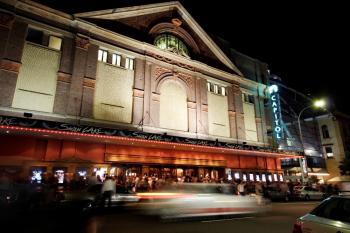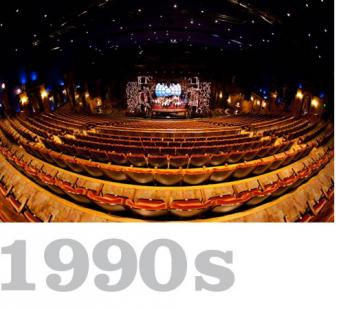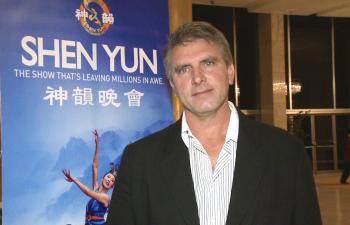Nestled in the historic Haymarket district near Sydney’s inner city Chinatown, the theatre building itself began its life in 1892 as the Belmore markets. Originally a single storey building, a second floor was added in the early 1900’s. The market’s motif of fruit and foliage may still be seen in the terra cotta decorative relief on the spandrels of the arches. The markets were later relocated a little further down, where they currently still operate as Paddy’s Markets.
In 1916, the building was converted to a hippodrome designed specifically for the Wirth Bros Circus. Part of the specification was a reinforced concrete water tank, 12 metres in diameter and 3.6 metres deep, for performances by seals and polar bears. The tank had a hydraulically controlled platform that was raised from the base to form a cover that doubled as a circus ring when the pool was not in use. Amazingly, this tank still exists but is covered by a new floor.
Picture Palace
After 10 years of performances, the circus became financially unviable and Wirth Bros initiated the idea of converting the theatre to a picture palace. In 1927 John Eberson, a renowned American designer of theatrically themed theatres, was commissioned to create the Capitol Theatre for its new tenant, Union Theatres. The classical reproduction statues and architectural props were manufactured in the US, scrupulously numbered for shipment and reassembly, and supervised by Sydney theatre designer Henry White.
By 1928, the construction of the ‘atmospheric’ picture palace had been completed with an interior designed to evoke a central courtyard and the ceiling lit to look like a star studded night sky. The Sydney Morning Herald covered the opening:
“The effect of the new Capitol Theatre on the crowds which entered it on Saturday night was bewildering and a little overwhelming. One seemed to have stepped from under the dull skies of everyday life and passed into an enchanted region where the depth of the blue heavens had something magical about it and something heavily exotic. Clouds passed lightly over, then stars began to twinkle. Then again all was blue and clear.”
In the coming years, people were attracted to the theatre to escape to a different world. They were captivated by the whimsical decor and the lavishness of the surroundings. They went to hear the orchestra and the mighty Wurlitzer orchestral organ, to watch the newsreel and soak up everything Hollywood had to offer. But for the Capitol, the glory days were over before they had started. Greater Union was hit hard by the depression and by 1933 when the theatre was converted for ‘talkies’, it was already showing second rate movies.
Television
In 1945, cinema’s had gained their audience again and Australian cinema houses prospered. There were 151 million admissions to Australian cinemas, that year, the biggest year in Australian movie history. By 1958, however, Australians had been seduced by television and more than 20 percent of Sydney cinemas had closed. It was a grim time for many theatres and without major investment the capitol’s future looked bleak. In 1977 Jesus Christ Superstar finished a successful two-year run but time, lack of funds and vandalism had taken their toll and the Capitol was in ruins.
Restoration
In July 1995 an acclaimed production of ‘Miss Saigon’ put the Capitol back on the world stage. Finally the Capitol had the second chance it deserved and Sydney had gained a theatre to be proud of.
The Capitol has 2,038 theatre seats, a hearing loop system, VIP box seats and wheelchair seating. The breathtakingly beautiful ceiling graces the auditorium, and spacious bar facilities make it the perfect place to meet friends before and after performances—which have been amongst the best.
Since 1995, the Capitol Theatre has staged internationally acclaimed productions. Miss Saigon, West Side Story, The Lion King, Chicago, Matthew Bourne’s Swan Lake, Paris Opera Ballet, Billy Elliot as well as many other major musicals have all vowed Sydney audiences. The theatre’s current production, Wicked has attracted over 550,000 visitors.
The stunning performance includes 100 of the world’s best classical artists, masterful choreography, breathtaking costumes, state-of-the-art digital backdrops and one-of-a-kind orchestra.
“It’s absolutely beautiful,” said Robert Stromberg, the production designer for the award winning movie Avatar, after seeing Shen Yun in the US last year. “It was so inspiring, I think I may have found some new ideas for the next Avatar.”
Where else could Shen Yun be but at the Capitol.
Background information courtesy of Capitol Theatre Management Pty Limited.











Friends Read Free